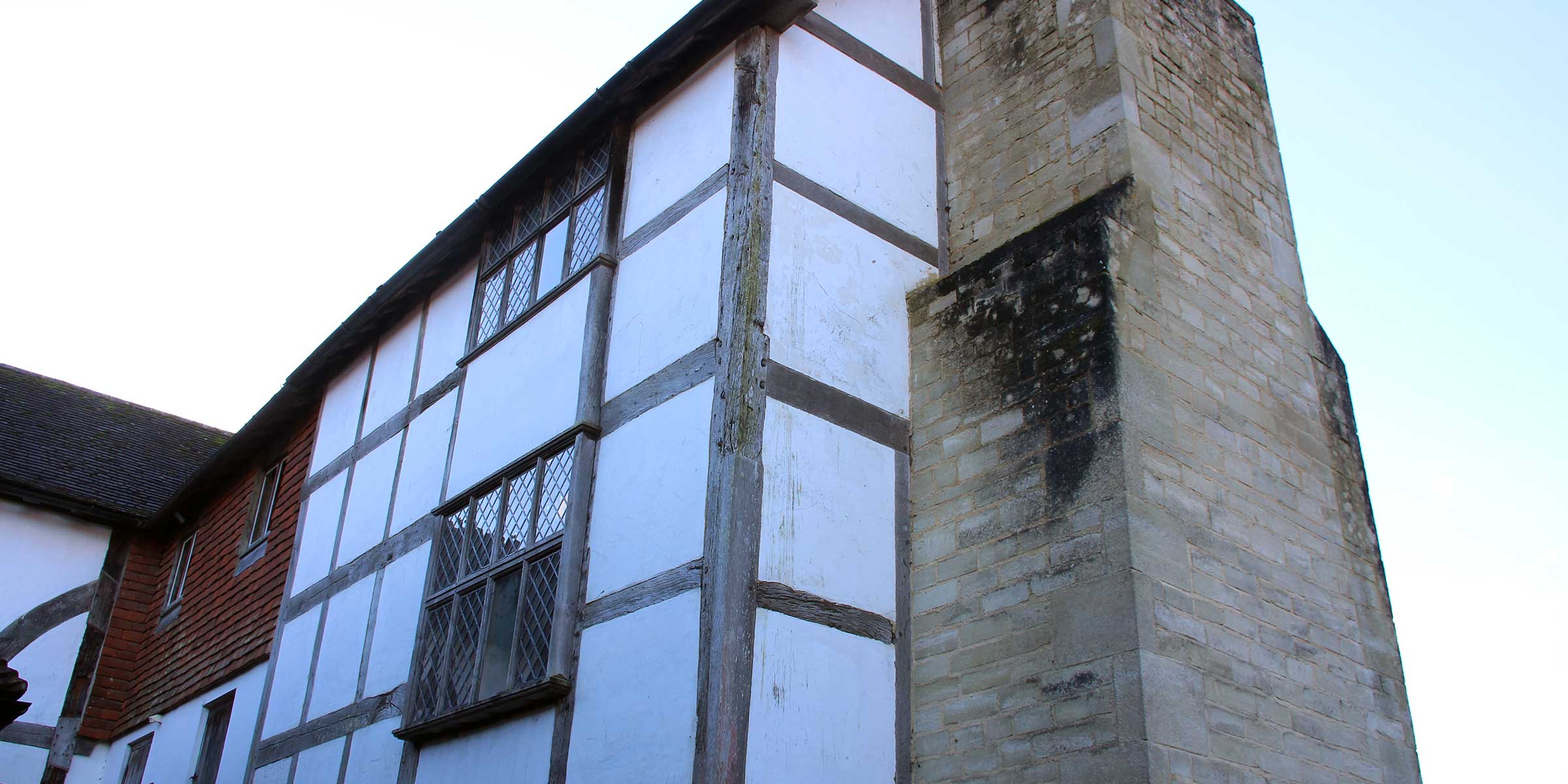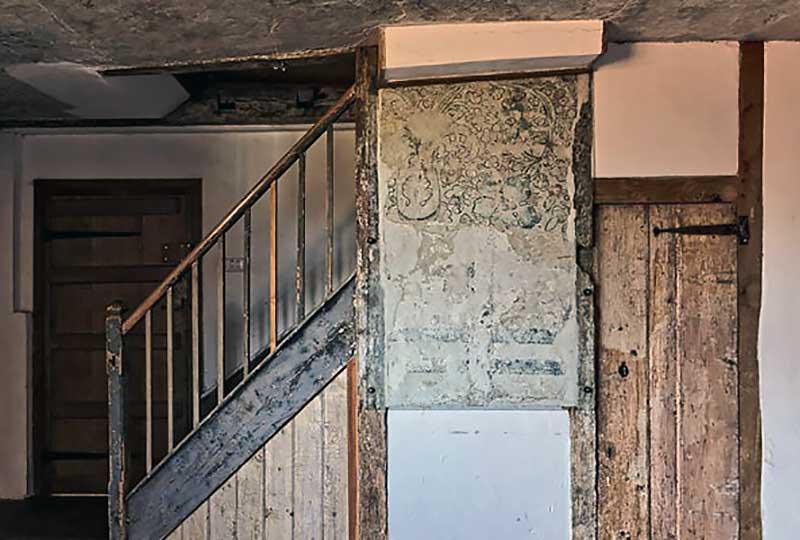
This building dates from the early 17th century. It was built as a rear extension to a medieval house in Reigate High Street. It contains two main rooms with fine carved fireplaces and the remains of contemporary decorative wall paintings.
This building stood at the rear of 43 High Street, Reigate. In 1981 it was due for demolition to make way for a shopping centre development, and was presented to the Museum by the developers.
Dating from the early 17th century, it contains two main rooms, one on each floor, with a basement and attic. It was an addition to an earlier building which was probably a late-medieval stair tower.
Share
Overview
Dates From
Early 17th century
Dismantled
1981
Reconstructed
1987
Original Location
Reigate, Surrey
Building History
Phases of the Building
Each of the two main rooms contained a fireplace with good quality surrounds of carved stone typical of the period. Access to the rooms was originally from the earlier stair tower. A corner of the lower room was partitioned with oak panelling to form a small closet. The upper room also contained a closet under the stairs leading up to the attic.

The house extension from Reigate in situ during dismantling in 1981.
The basement walls and chimney were built of Reigate Stone, but the original stone had deteriorated so badly that very little of it could be saved for use in the reconstruction.
Reigate Stone was quarried and mined from the Upper Greensand formation in the hills just north of the town. It is a freestone which can be cut and carved easily. It was widely used both for interior and exterior work, but its external weathering properties were notoriously bad.


Decorative Painting
During dismantling it was discovered that substantial fragments of original decorative painting were concealed under later coats of paint. Most of these were in the upper room, and included an overmantel painting of St George slaying the dragon.

Reigate house stone fireplace and floral painting.
The painting on the walls and ceiling consisted mainly of floral patterns executed in black line with patches of colour, typical of the period. The painted areas of plaster were carefully removed during dismantling and have been restored for reinstatement in the building.

The quality of the fireplaces and the interior decoration suggest that the building represents a good standard of provincial town life. From 1587 to the mid 17th century the site was occupied by a family of brewers named Cade.
On the death of Walter Cade in 1621 the property was divided amongst his three children and a grandchild, and it is possible that the extension was built at that time to accommodate one of these new owners.
Top 3 Interesting Facts

Town Planning
This house extension from Reigate was due for demolition due to town planning, to make way for a shopping centre.

Hidden Decoration
The evidence of beautiful internal decoration was revealed during the dismantling, including floral patterns on the walls and ceiling of the upper room.

Town Life
The quality of the fireplace and interior decoration suggest that the building represents a good standard of provincial town life.







